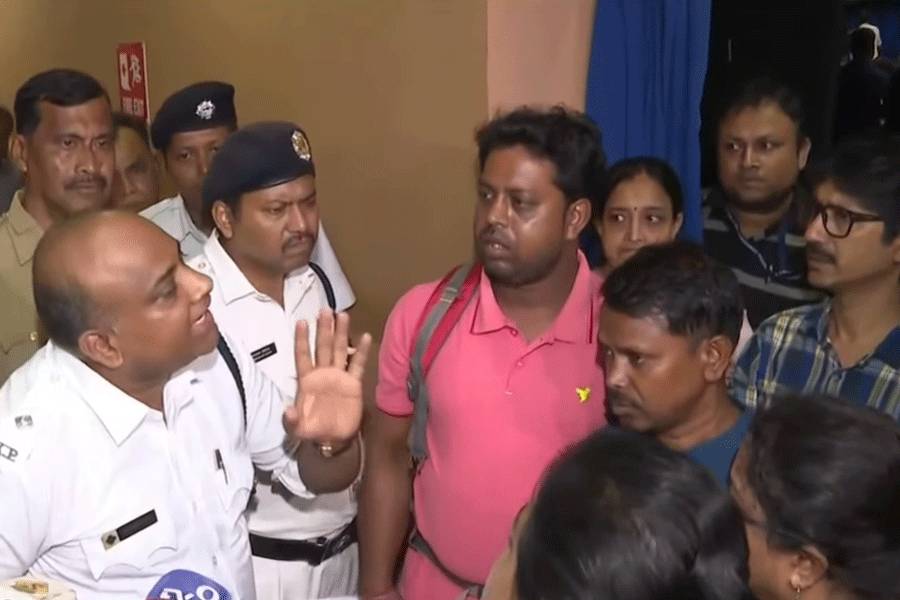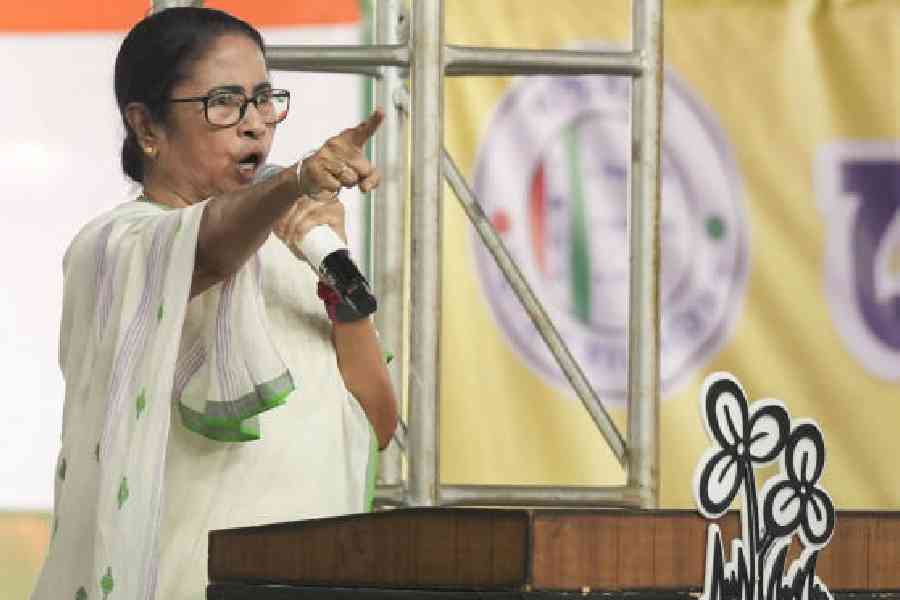 |
Absorption of indigenous people into the mainstream is robbing cultures of a rich legacy
The writer is lecturer of zoology, B. Borooah College, Guwahati
Vast archives of knowledge and expertise are vanishing into oblivion, exposing humanity to the danger of losing its past and perhaps jeopardising its future as well. Stored in the memories of elders, healers, midwives, farmers, fishermen and hunters, in the cultures of the indigenous people, there is an enormous trove of wisdom.
But the indigenous people are dying out by being absorbed into the so-called modern civilisation. With the loss of traditional culture, we are also losing the irreplaceable knowledge stored in it.
As we delve into the history of the material culture of Assam, we discover that this state has contributed immensely to the history of human civilisation. Though our history books have been silent on this aspect, there is evidence to prove that some of the most important technological discoveries have been made by the inhabitants of early Assam.
One such remarkable contribution is the invention of gunpowder, though universally it is credited to the Chinese. Yet historical documents state otherwise. British traveller and historian J.B. Traveneer states: “It is believed that it is the same people who in ancient times first discovered gun and gunpowder, which passed from Assam to Pegu and Pegu to China. This is the reason why the discovery is generally ascribed to the Chinese”.
Another British researcher, J.P. Wade says: “The firearms were first made in Assam.” When the Ahoms came to Assam they fought with the Chutiyas. The Chutiyas battled the Ahoms with cannons and other varieties of firearms. Therefore, it can be proved that firearms and gunpowder were traditionally made in early Assam. Even today, many tribes of the Northeast manufacture gunpowder indigenously. During Ahom rule, the common people of Assam regularly contributed saltpeter to the khargharia of the Ahom royalty.
Classical historians like Pliny, Ammianus Marcellinus and Oldham have referred to the iron culture of Assam. According to Pliny, the iron of Serica (Assam) was considered to be of the best quality. It is believed that the people of this region learnt the art of smelting iron from neighbouring hill tribes like the Khasis of Meghalaya. Oldham states: “The Khasi iron was excellent for all purposes like the Swedish one, and huge quantities were exported to other parts in lumps or in the shape of a hoe.”
Ahom king Sukapha initiated the smelting of iron ore and manufactured iron for producing iron implements in a hill called “Tiru Pahar” (ti — smelting of iron, ru — caves), which means a “place where iron was smelted” in Tai language. Sukapha established villages of iron smelters, including iron smelting workshops in the area, whose remains are evident even today. A big pond found here was probably dug by the Ahom monarch as a source of water in the process of smelting iron. Till date, small pieces of iron can be found lying scattered in the jungles of Tiru Hills. Due to the presence of many iron smelting furnaces and workshops, this place was also known as Tiru Loha Khat.
Long before the advent of modern taxonomy, studies on the anatomy, morphology and behaviour of flora and fauna were undertaken in ancient Assam. These taxonomical exercises are encapsulated in the form of riddles, which made this classification sound interesting and added valuable gems to the rich oral and written literature. Even Srimanta Sankardev, in most of his literary works, has mentioned an Assamese way of classification and nomenclature of plants and animals.
There has been a resurgence in global interest in the indigenous agrarian practices taken up by farmers since time immemorial.
In Assam, too, agriculturists have estimated the availability of more than a thousand endemic, pest and drought-resistant varieties of rice. The farmers even made meteorological observations on the prediction of rainfall and scarcity of water, which are relevant even in this era of modern meteorological studies. The indigenously-developed eco-friendly and sustainable system of pest management also assumes importance in contemporary times.
The rich body of medicinal lore found in the oral and written treatises of Assam reveals the prevalence of a distinct form of the traditional medicinal system since ancient times. Bejali Chikitsa or Gharua Chikitsa, as it was called, is a rich repository of medical knowledge. It is interesting to note that the Assamese bejas or folk healers identified the causes, symptoms and treatment of over 20 types of fever.
In the past, the Koch and Ahom royalties of Assam maintained a separate medical department under trained officers and other physicians for both men and animals. It has also been found that the Assamese people traditionally used a large variety of cosmetics and sex medicines for beauty care and treatment of sexual diseases.
There was also a traditional science for taking care of the horses and elephants that were part of the royal army. A rich treasure-trove of veterinary lore reveals the diagnosis, symptoms and treatment of diseases which are found in the manuscripts on traditional horse lore, called Ghora Nidan. Hastividyaranava, written under the patronage of King Shiva Sinha, is an invaluable treatise on elephant husbandry, containing information on the classification and nomenclature of elephants, their modes of training, their ailments and treatment.
Over the ages, indigenous people have developed technologies for sustainable development and natural resource utilisation to maintain the delicate ecological balance. Sacred groves, sacred ponds, sacred patches of grasslands, sacred animals and others are examples of traditional conservation backed by religious sanction. Assam has had a long tradition of rainwater harvesting, by construction of dongs (traditional system of canals) and tanks for conservation and utilisation of water.
Arithmetic was an important subject of study in the traditional schools of Assam. The pioneer of mathematical studies in Assam, Bakul Kayastha, the intellectual in the court of King Naranarayana, wrote the first original Assamese book on mathematics called Kitabat Manjari. The Kayasthas of Assam had developed a kind of traditional form of mathematics in the course of time, known as kaitheli anka. The oral lore of Assam has interesting arithmetical exercises in the form of riddles and jests. The astronomical studies in early Assam, too, made much headway in the study of stars and planets.
Assam is known for producing special and indigenously developed types of paper, writing ink, painting material and innovative methods to preserve manuscripts and paintings. The idea of laminating paper or book covers is also regarded as an indigenously developed technology of this region. Srimanta Sankardev, the father of modern Assamese society, developed technology to manufacture writing and art materials for calligraphy and paintings.
Since the days of yore, edible salt has been manufactured from fresh water brine springs in some areas of Assam. Surprisingly, this technology is still continuing and this salt is used by many of the local people, who believe that this salt has some miraculous medicinal properties.
Many of the natives of Assam have been using lime while chewing betel-nut and leaves. In Assam, edible lime was produced by burning the shells of locally available snails. Natives of the Khasi and Garo Hills produced lime from mines since ancient times. The various ethnic groups of this region have also developed a traditional technology, by which they dye fabrics with natural dyes.
Bamboo is ubiquitous in Assam’s culture in all its traditional art and crafts and also for building houses and for making modes of conveyance such as boats, carts and palanquins.
Manufacturing of gold and silver ware, bell metal, brass and copperware has been found among the people of Assam. Gold was found mixed in the sands of many rivers of Assam. The sonowals (gold washers) and the thengals (silver washers) examined the sand for “chats” to discover gold and silver flakes in the silt. They had developed a traditional technology for collection of gold and silver flakes from the rivers and, at the same time, metallurgy of the metals.
Literary and epigraphic records testified the abundant architectural activity in Assam, which included many secular and religious structures of the Kacharis, Koch and Ahom rulers, who had constructed the fortified cities. Maidams were built for the burial mounds of the Ahoms.










